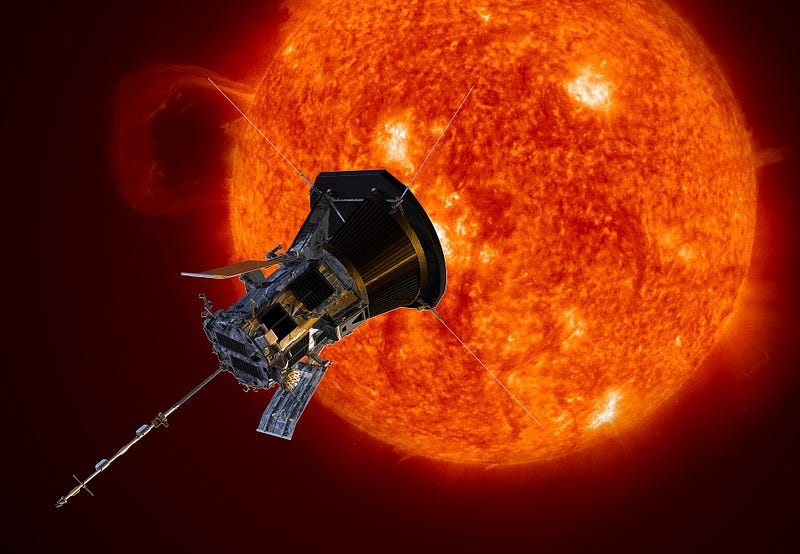Exploring Alien Artifacts: Could NASA Uncover Ancient Probes?
Written on
Chapter 1: The Search for Alien Probes
Could astronauts potentially stumble upon artifacts from extraterrestrial civilizations in our solar system? This idea may sound outlandish, yet a NASA-funded study has proposed innovative methods to seek out signs of advanced alien life. It suggests that if such civilizations once existed, remnants of their spacecraft might still be orbiting the planets or lying dormant on celestial bodies throughout our solar system.
What led researchers to this conclusion? Several factors contribute, including the speed at which stars pass by Earth, the likelihood of life elsewhere in the galaxy, our current rocket technology, and the duration of Earth's habitability. Let's delve deeper into these elements.
Section 1.1: The Cosmic Dance of Stars
While it may seem strange, the stars we observe in the night sky are not stationary; they move at incredible speeds. However, their vast distances make them appear fixed in place. Every 100,000 years, a star comes within a light-year of our planet, which is akin to a close encounter in cosmic terms.
Currently, Proxima Centauri, the nearest star, is 4.2 light-years away. Over Earth's 4.5 billion-year history, approximately 450,000 different stars have passed within one light-year of us. With the Milky Way housing between 100 and 400 billion stars, this means that around 0.00045% of stars have made these close approaches—an intriguing statistic for those searching for advanced life.

Section 1.2: The Possibility of Life
So, how likely is it that life exists around these stars? The honest answer is that we still lack definitive knowledge. Estimates of life’s prevalence in the galaxy vary widely, as we cannot yet determine how likely it is for life to arise even under optimal conditions. However, if we were to discover simple life forms in Martian lakes or the hidden oceans beneath moons like Enceladus or Europa, it would suggest that life might thrive elsewhere in the galaxy.
The existence of multiple life forms around a single star could indicate that, given suitable circumstances, life is likely to emerge. Thus, our galaxy might be teeming with simple microbial life. If life is indeed prevalent, some of it may evolve into advanced civilizations, akin to humanity. Given the universe's age of 13.8 billion years, there was ample time for such civilizations to develop long before Earth came into being.

Chapter 2: The Implications of Discovery
If a star with a habitable planet were just a light-year away, we would undoubtedly want to send a probe to investigate. Currently, our fastest spacecraft, the Parker Solar Probe, can travel at 692,000 kilometers per hour, which would allow it to reach a star one light-year distant in approximately 1,559 years. Though a monumental task, the potential rewards of exploring an Earth-like planet would be worth the effort.
The first video discusses the search for hidden temples and lost Nazca Lines using satellite technology, which ties into our quest for understanding ancient civilizations and their possible connections to extraterrestrial life.
If an advanced civilization once existed near us, it is plausible that they would have sent probes to investigate Earth. With the number of stars that have passed nearby, there’s a reasonable chance that one of them was home to a civilization that dispatched a probe, leaving behind relics somewhere in our solar system.

Section 2.1: The Search for Alien Artifacts
Such an ancient probe might be billions of years old, potentially unrecognizable due to rust and degradation. It could be anywhere—drifting in the void of space, resting on a planet or moon, or buried in a crater. Regardless of its condition, any such artifact would still exhibit characteristics distinct from natural formations.
This study advocates for future NASA missions to be equipped with sensors capable of detecting these archaeological treasures while conducting their primary objectives. Implementing these additional tools would entail a minimal increase in mission costs, significantly less than alternative methods proposed for detecting extraterrestrial life.

The second video examines evidence captured by Mars rovers that may point to signs of a lost civilization, further reinforcing the idea that advanced life may have existed elsewhere.
Section 2.2: The Future of NASA's Exploration
Should NASA consider integrating alien archaeology sensors into its upcoming missions? Unfortunately, it seems that NASA has not yet acted on the recommendations presented in the study. However, this may not be entirely negative.
One fundamental premise of this logic is that basic life forms are widespread throughout the universe, a claim that cannot be validated until we discover signs of simple life on other planets or moons. Therefore, it would be prudent for NASA to focus on locating basic extraterrestrial life before investing in the search for ancient artifacts. This approach would ensure that resources are spent wisely and that the underlying logic is sound.
For those of us passionate about space exploration, the mere possibility of ancient alien crafts hidden in our solar system is thrilling. The fact that credible scientists are contemplating this scenario is astonishing—it's as if we've stepped into a science fiction narrative!
Ultimately, we stand at the brink of extraordinary discoveries that could significantly alter our understanding of our place in the cosmos. So, keep your eyes on the skies and your dreams alive; the universe may hold wonders beyond our imagination.